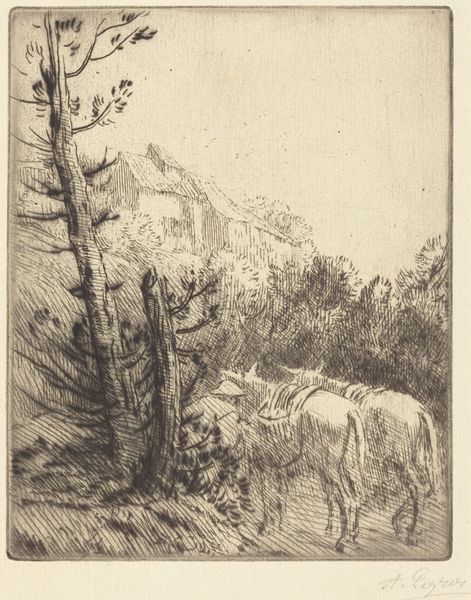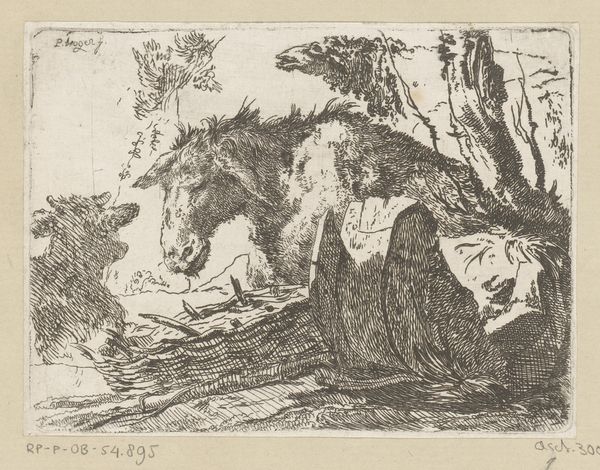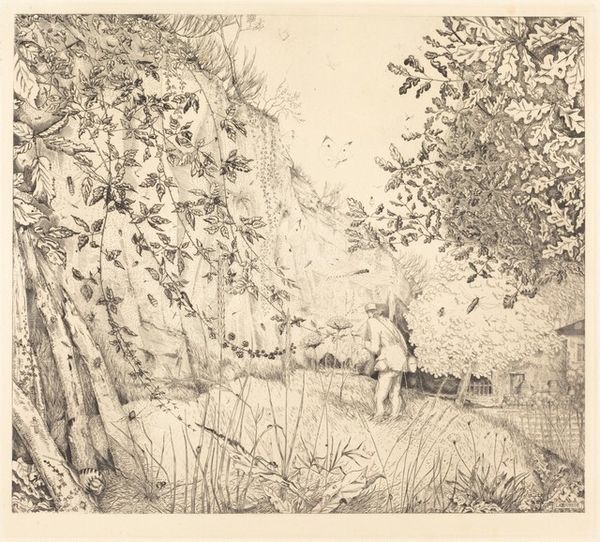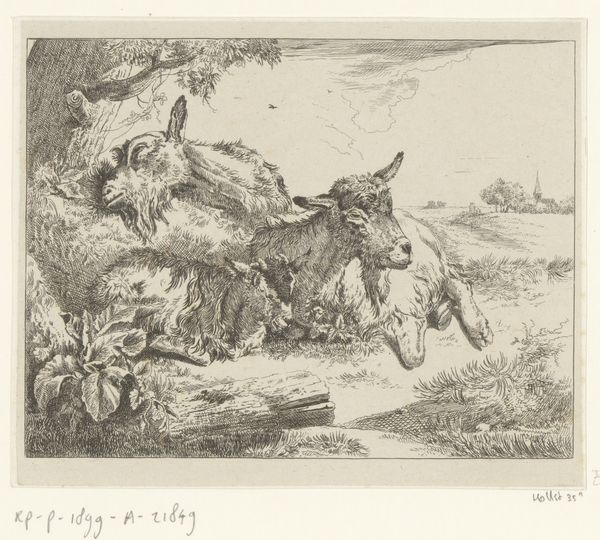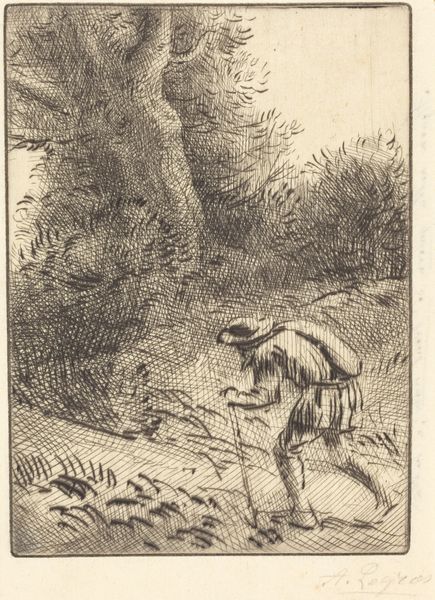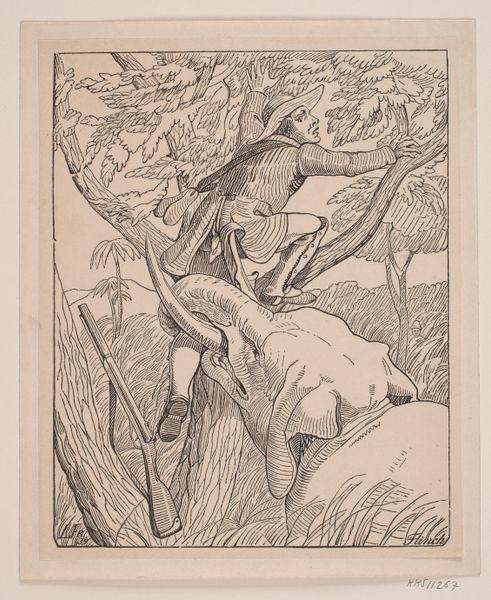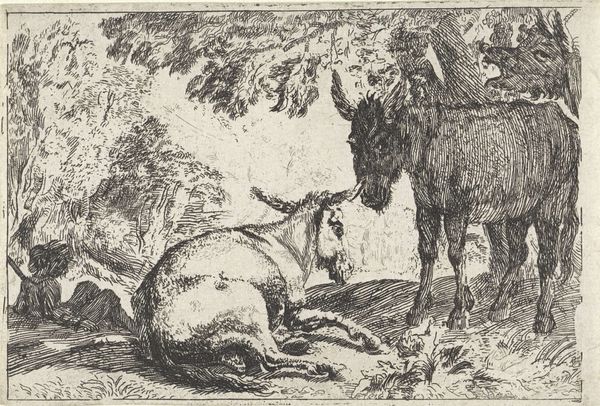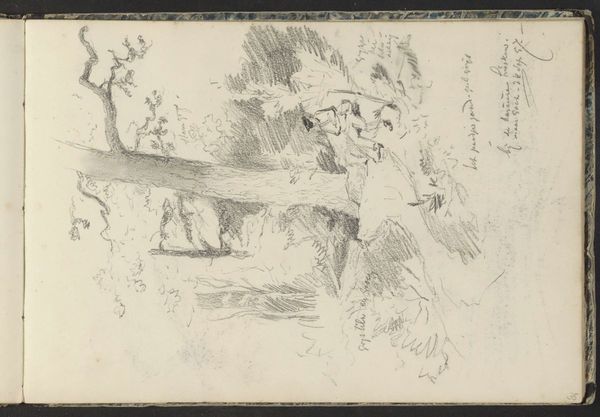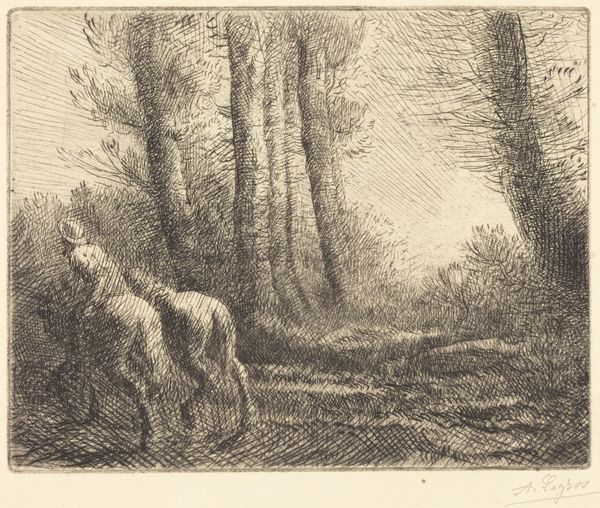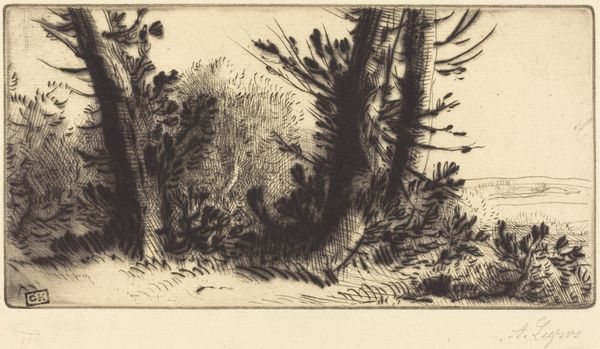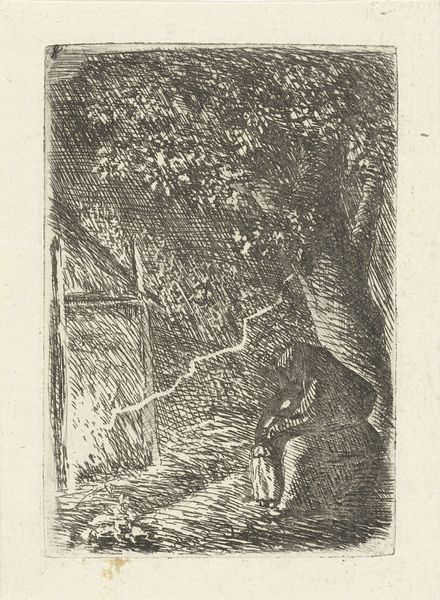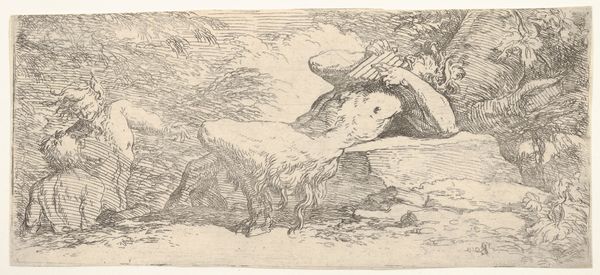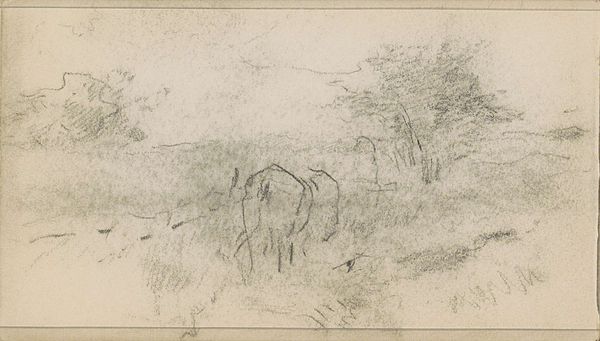
drawing, ink, pen
#
drawing
#
ink drawing
#
baroque
#
pen drawing
#
dutch-golden-age
#
pen illustration
#
pen sketch
#
landscape
#
figuration
#
ink line art
#
ink
#
sketch
#
pen-ink sketch
#
pen work
#
pen
#
realism
Dimensions: 7 x 10 cm
Copyright: Public domain
Rembrandt van Rijn made this tiny print of ‘The Bull’ using etching, a process that democratized image-making in the 17th century. He covered a copper plate with a waxy ground, drew into it with a needle to expose the metal, then bathed the plate in acid. The acid bit into the exposed lines, creating grooves that would hold ink. The plate was then wiped clean, leaving ink only in the etched lines. Pressed onto paper, it created a reversed image. The resulting image is a marvel of economy. Rembrandt captured the animal's bulk and the surrounding landscape with just a few deftly placed lines. The etching process allowed for multiples, making art more accessible, aligning with the burgeoning mercantile culture of the Dutch Golden Age. The network of economic exchange made this kind of printmaking possible, which allowed artists to reach a wider audience and participate in a market that valued both skill and efficiency. Rembrandt’s bull reminds us that art is never just about aesthetics; it's also about the means of production.
Comments
rijksmuseum about 2 years ago
⋮
While on his walks in the surroundings of Amsterdam, Rembrandt came upon not only dwellings and natural settings, but also many animals. He saw this young creature standing at the water’s edge and probably captured it on the etching plate on the spot. He had made a drawing of a similar subject about ten years earlier.
Join the conversation
Join millions of artists and users on Artera today and experience the ultimate creative platform.
